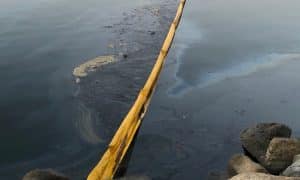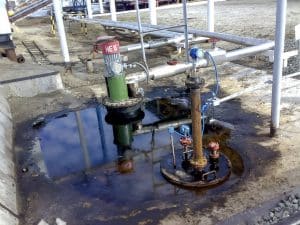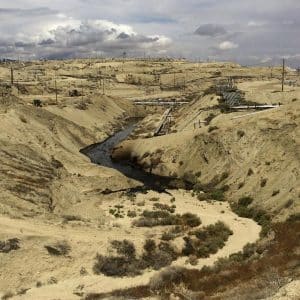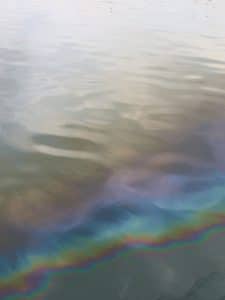The High Cost of SPCC Violations: An Analysis of Penalties
Intro
SPCC Violations, or Spill Prevention Control and Countermeasures Violations, can result in serious consequences for businesses. Not only do these violations pose a risk to the environment and public health, but they can also lead to significant financial penalties. i EPA may assess civil administrative penalties of up to $37,500 per day, per violation against federal agencies for noncompliance. Understanding the implications of SPCC non-compliance is crucial for businesses that handle oil or other hazardous substances. In this blog post, from The Stormwater Training Center, we will explore the range of penalties for SPCC violations, how these fines are calculated, the impact of violations beyond financial penalties, real-world examples of enforcement actions, and best practices for avoiding SPCC violations.
Understanding the Basics of SPCC Regulations
The Spill Prevention, Control, and Countermeasure (SPCC) rules are a fundamental component of the United States’ environmental protection framework, specifically designed to avert oil spills that could harm waterways and ecosystems. Administered by the Environmental Protection Agency (EPA), these regulations require facilities that store, process, handle, or use oil and its derivatives in quantities above specific thresholds to create and enact a comprehensive SPCC plan. This plan is not merely a document but a strategic approach to prevent oil spills and establish effective responses should spills occur.
Central to the SPCC regulation is the requirement for facilities to design and maintain secondary containment solutions, such as berms or dikes, to contain oil in the event of a container failure. Moreover, these regulations necessitate regular inspection of oil-containing equipment, training for personnel on spill response protocols, and detailed record-keeping to track compliance efforts and spill events. Facilities covered under the SPCC mandate include a wide range of operations, from oil production and refining to farms and other agricultural entities that store large quantities of oil for machinery and operations.
The preparation of an SPCC plan is not a one-size-fits-all mandate; it demands a tailored approach that considers the unique characteristics of each facility, including its size, location, and the specific types of oil stored or used on site. For larger facilities, the SPCC plan must be certified by a Professional Engineer (PE), ensuring that the devised strategies meet federal requirements and are effective in spill prevention. Smaller operations may qualify to self-certify their SPCC plans, depending on the amount of oil stored and the facility’s history of spills.
Compliance with the SPCC regulations is not static. Facilities must continually adapt their SPCC plans in response to changes in operations, oil storage capacities, or after significant spills. This dynamic aspect of the SPCC regulations underscores the EPA’s commitment to both preventing oil spills and ensuring rapid, effective responses in the event that spills occur, safeguarding the nation’s waterways and ecosystems from oil-related damages.
The Range of Penalties for SPCC Non-Compliance
When it comes to SPCC non-compliance, the spectrum of penalties is broad, reflecting the seriousness of each infraction and its environmental repercussions. Federal regulations enforced by the EPA delineate a framework for imposing fines, which can dramatically escalate from minor amounts for less severe breaches to substantial figures in the case of egregious violations. For instance, operational oversights leading to minor oil spills might attract lower fines, whereas significant spill events due to negligence or failure to implement an adequate SPCC plan can result in penalties reaching into the millions. Violators can be fined $4,527 per tampering event or sale of defeat device.
Each violation is assessed on a case-by-case basis, taking into account factors such as the volume of the spill, the potential harm to the

environment, whether the spill reached navigable waters or adjoining shorelines, and the degree of negligence exhibited by the facility. Additionally, repeat offenders face increasingly severe penalties, emphasizing the EPA’s commitment to deterrence through financial disincentives. Violators are subject to civil penalties up to $45,268 per noncompliant vehicle or engine.
Beyond mere fines, entities found in violation may be subject to a gamut of enforcement actions, including but not limited to, mandatory implementation of corrective measures, heightened scrutiny in future inspections, and even temporary or permanent shutdown of operations in extreme cases.
Beyond federal penalties, states may impose additional fines and requirements, creating a layered enforcement landscape. For example, certain states with a significant number of facilities that could impact waterways might have stricter enforcement policies and higher fines to reflect the heightened risk to their ecosystems.
Importantly, the EPA can also mandate violators to undertake projects that benefit the environment, known as Supplemental Environmental Projects (SEPs), as part of the settlement. These projects often aim to restore damaged ecosystems, improve local environmental conditions, or prevent future incidents, and while they represent an additional cost to the violator, they offer a constructive avenue for remediation beyond simple punishment.
Navigating the complexities of SPCC compliance demands vigilance and a proactive approach to environmental stewardship, as the penalties for non-compliance underscore the federal government’s serious stance on protecting the nation’s waterways from oil pollution.
Calculating the Cost of Fines and Penalties
Determining the financial implications of SPCC violations involves a multifaceted analysis, as penalties for non-compliance can significantly vary. The base fines for infractions are just the starting point. Companies must also consider the ancillary costs that accompany these fines, including, but not limited to, legal expenses incurred during the response to enforcement actions. Legal fees can escalate quickly, especially if the case involves protracted negotiations with regulatory agencies or litigation. Additionally, the cost of implementing corrective actions as mandated by the EPA or state authorities can represent a substantial financial burden. These corrective measures may involve upgrading facilities, installing new containment systems, or enhancing existing operational practices to meet compliance standards.
Another critical aspect that companies must factor into the cost equation is the expense associated with cleaning up spills. Cleanup costs can range dramatically depending on the size and location of the spill, the type of oil or hazardous substance involved, and the extent of environmental damage. In some cases, companies are also required to compensate for environmental damage, which can lead to further financial outlays beyond the initial cleanup efforts.
Regulatory agencies may also impose ongoing compliance costs as part of their enforcement actions. These can include increased monitoring and reporting requirements, which necessitate additional administrative work and possibly the hiring of extra staff or consultants. Companies might be required to conduct more frequent inspections or implement comprehensive employee training programs, both of which represent ongoing expenses.
In assessing the total cost of SPCC violation penalties, businesses must look beyond the immediate fines and consider the broader financial landscape, including legal costs, cleanup and remediation expenses, and the potential for increased operational costs tied to compliance enhancements. This comprehensive approach to calculating the financial impact of non-compliance underscores the importance of proactive spill prevention measures and the value of maintaining rigorous compliance protocols. Violators can be fined $4,527 per tampering event or sale of defeat device.
The Impact of Violations Beyond Financial Penalties
The repercussions of SPCC violations extend significantly beyond the realm of financial penalties, profoundly affecting companies in a multitude of ways. A notable consequence of non-compliance is the potential tarnishing of a company’s public image and reputation. In today’s environmentally conscious society, news of environmental violations can spread rapidly, leading to public backlash and loss of consumer trust. This negative perception can be difficult to repair and may result in a long-term decline in customer base and revenue.
In addition to reputational damage, companies found in violation of SPCC regulations may encounter operational disruptions. Regulatory agencies have the authority to halt operations until compliance is achieved, which can lead to substantial revenue loss due to downtime. For some businesses, particularly small operations, this disruption can be financially crippling and may even threaten the viability of the company. Koch Industries, the second-largest privately held company in the United States, was required to pay a $30 million civil penalty for oil spills.
The legal ramifications of SPCC violations also extend into the possibility of civil lawsuits from affected parties. Businesses might face litigation from local communities, especially if a spill adversely affects public health or property.  These lawsuits can result in judgments or settlements that far exceed the initial fines imposed by regulatory agencies, further compounding the financial impact of non-compliance.
These lawsuits can result in judgments or settlements that far exceed the initial fines imposed by regulatory agencies, further compounding the financial impact of non-compliance.
Moreover, businesses implicated in serious violations may experience challenges in securing or maintaining insurance coverage. Insurers may view such companies as high-risk, leading to increased premiums or denial of coverage altogether. This can pose a significant operational challenge, as adequate insurance coverage is crucial for managing risks associated with handling hazardous substances.
Finally, the consequences of SPCC non-compliance can impact individual careers. Employees responsible for oversight of compliance activities, especially those in management positions, may face disciplinary actions, including termination. In severe cases, individuals could be subject to criminal charges, leading to personal legal battles, fines, and potentially imprisonment.
The breadth of these impacts highlights the importance of stringent adherence to SPCC regulations, emphasizing that the cost of non-compliance transcends monetary penalties and can have profound implications for businesses and individuals alike.
Real-World Examples of SPCC Enforcement Actions
Throughout the United States, various companies have faced stringent enforcement actions due to non-compliance with SPCC regulations. These examples serve to illustrate the serious consequences and broad reach of regulatory oversight.
In one notable instance, a refinery in Louisiana was fined $3.7 million after failing to implement an effective SPCC plan, resulting in a significant oil spill that harmed local wildlife and waterways. This case underscored the critical importance of having a robust and fully operational spill prevention plan in place.
Another example involved an agricultural cooperative in Iowa, which was fined $1.1 million for SPCC violations that led to the discharge of oil into navigable waters. This incident highlighted the broad applicability of SPCC regulations, extending beyond traditional oil and gas industries to include agricultural operations with substantial oil storage capacities.
In Ohio, a manufacturing plant faced over $600,000 in fines and was required to undertake comprehensive upgrades to its oil storage facilities. The enforcement action followed a series of smaller spills that collectively posed a significant threat to the environment, demonstrating the cumulative impact of repeated non-compliance.
Additionally, in Alaska, a shipping company was fined and agreed to a settlement that included extensive corrective measures after an oil spill from one of its vessels. The settlement emphasized not only the direct financial penalties but also the commitment to future compliance and environmental stewardship.
These real-world cases reflect the diverse nature of SPCC enforcement actions across different states and industries. They showcase the EPA’s dedication to holding violators accountable, the substantial financial penalties involved, and the imperative for companies to adhere to SPCC regulations to protect the environment and avoid costly penalties.
Best Practices for Avoiding SPCC Violations
Ensuring adherence to SPCC regulations necessitates a proactive and comprehensive approach from businesses involved in the storage, handling, or use of oil. Central to this effort is the development, implementation, and regular review of a robust SPCC plan tailored to the specific needs and risks associated with each facility. It is imperative for companies to stay abreast of regulatory changes and to adjust their SPCC plans accordingly.
One of the foundational steps in avoiding SPCC violations is the thorough training of personnel. Employees at all levels must understand their roles in spill prevention, including the correct operation and maintenance of equipment designed to prevent oil spills. Regular training sessions ensure that staff are equipped with the latest knowledge and techniques to mitigate risks effectively.
Routine inspections play a critical role in identifying potential issues before they lead to violations. Facilities should establish a schedule for inspecting oil storage containers, secondary containment structures, and other critical components of their SPCC plan. These inspections should be documented meticulously, with any identified issues addressed promptly to maintain compliance.
Engagement with professional engineers or environmental consultants can provide valuable insights into the most effective strategies for SPCC compliance. These experts can assist in the initial development of an SPCC plan, conduct audits of existing practices, and recommend improvements based on the latest industry standards and regulatory requirements.
Adopting technology solutions, such as leak detection systems and automated monitoring tools, can enhance a facility’s ability to prevent and respond to spills. By leveraging technology, companies can gain real-time insights into their operations, enabling quicker response times and minimizing the potential for significant spills.
Finally, fostering a culture of environmental responsibility within the organization encourages employees to take ownership of spill prevention efforts. By emphasizing the importance of SPCC compliance at all levels of the company, businesses can ensure that proactive measures are taken consistently, reducing the risk of violations and the associated penalties.
In summary, a combination of strategic planning, employee training, regular inspections, expert consultation, technological innovation, and cultural commitment forms the cornerstone of effective SPCC compliance. By adopting these best practices, companies can navigate the complexities of SPCC regulations and protect their operations from the high costs of non-compliance.

